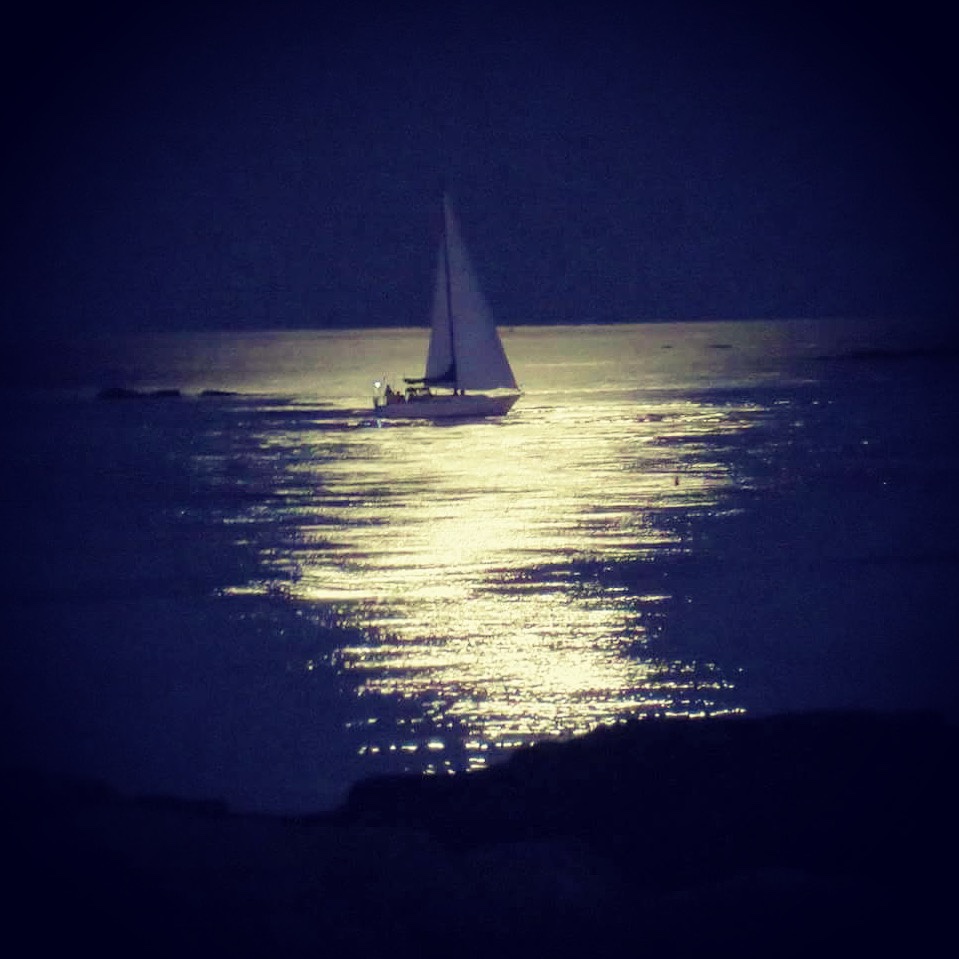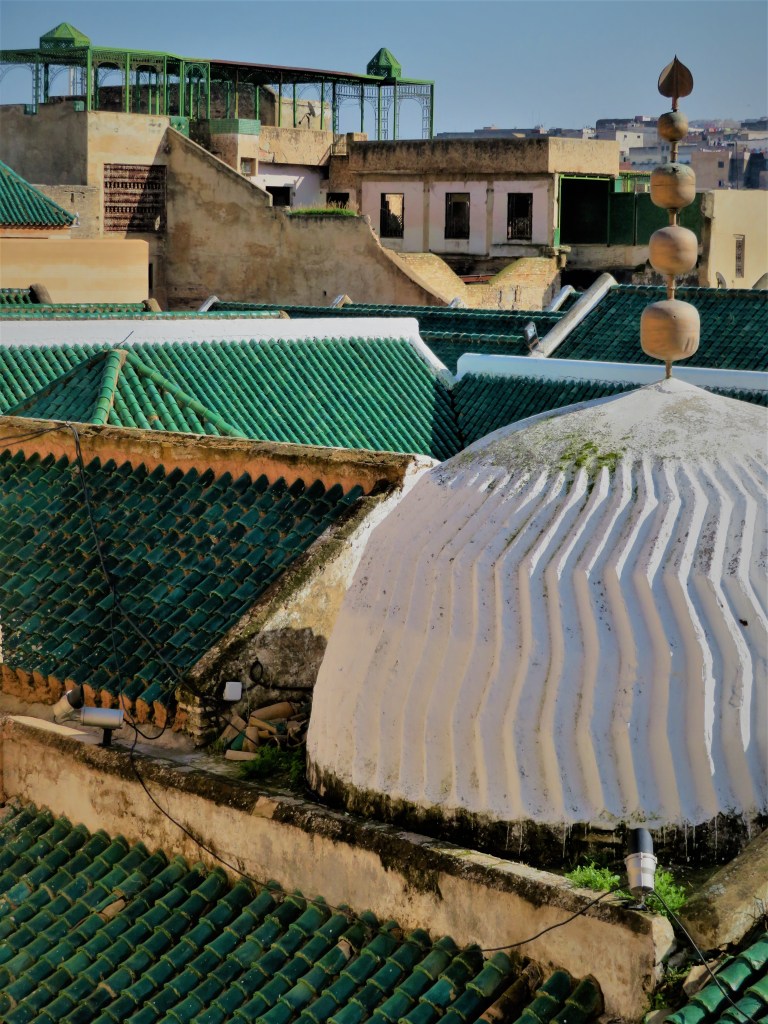
My mother died this week, on her birthday. Because it happened to be two days before my birthday, and she’d told me it was “unfair” to us siblings that our father died on Father’s Day, I was convinced she’d try to make it to heaven that night. (And I may have gently mentioned that, if it was OK with her, she might want to not do anything rash two days hence. I knew how badly she’d have felt if my birthday were her death day.)
My father’s birthdate and date of death, fittingly, were mathematical palindromes. When my mother took her final breath on her birthday night, she had reached the exact age embedded in the anagram of her dates of birth and death.
Logic and word puzzles have always been a staple in a family filled with avocations in both the arts and hard sciences. We take unseemly enjoyment in such games. (And one of us remains a terrible loser.) Sometimes it takes an overview from an immense distance to see and connect such common threads and appreciate their enduring strength and sway.
My mother, who lost her mother when she was very young, grew up with only sisters. She would have had no idea what to do with a little girl–even one who had not been a middle child and an older brother’s Irish twin. My father, who grew up with one brother, appeared to me to have had no idea quite what to do with a daughter, either, but that seemed both reasonable and specific to my personality.
At two I was more than willing to bullet-point a case for exemption from otherwise uniform napping requirements, and for going wherever I wanted to go, without regard for the languages and geopolitical situations brewing in the applicable venue. And I was very unhappy if my arguments did not carry the day. (I’m sure this was unconnected to my eventual career as a……prosecutor).
Children can go from adorable to terrifying and back on a dime–at least pending their acquisition of the ability to navigate reasonably high-level mathematical sciences.

My mother had art and antiques, rather than the hard sciences, in her history and heart and bones. She was about four when her grandfather painted this portrait of her. Her only memory of her artist grandfather was that he had licked the tips of his paintbrushes into fine points to paint details, and had eventually gone mad, possibly from chemical compounds skulking in the oil paints.
It has always struck me that the childhood portrait is so somber. Perhaps I project into it the thoughts of a motherless child living in a then-isolated area of Massachusetts. Her sisters were much older and she only ever spoke of having had one childhood friend, with whom she lost contact after moving. Her father was a war veteran whom I only remember from annual childhood visits to his house in Western Massachusetts, where I always saw him seated in the same chair, in the middle of the same darkened room, his back to the doorway. He greeted us for many years, but never asked us any questions.
From all that darkness, lyrical sights and sounds emerged. My mother became a talented musician after correctly deducing that mastering the notoriously difficult double-reed bassoon would be her path to be the first in her family to go to college. She received a full scholarship and played professionally with two New York orchestras, but never had enough money to own a bassoon and had to borrow the instruments she practiced and played. I learned only after she died that a high school friend of mine, who played the bassoon, had allowed my mother to play hers, which is a delightful thought and image.
None of her children has ever heard her play.
She then headed to Cambridge, Massachusetts, for a graduate degree in art history. There, in 1954, she was introduced by a shockingly young Harvard physics professor named Irwin–who still teaches to this day–to an even younger physics professor named Paul Martin, who put the “Martin” in the Martin-Schwinger equation. My parents were married in Copenhagen in 1959 (or so they believed; documentation remains elusive). Irwin’s voice by phone was the last put up to my mother’s ear on her last day here, as he wished her a Happy Birthday.
There is some photographic evidence that 1950s physics gatherings were far more exciting than one would have expected, or that even children born in the 60s might have imagined. Here my thoroughly modern mother is wielding the feather duster; my father is the foreground physicist; and physicist Roy Glauber appears to have presaged Inspector Clouseau’s later arrival on the Paris scene.
Thank goodness for traditional cameras and film.

Even in black and white, one can spot the vivid colors and graphic shapes which became my mother’s staples. With a wink, her own watercolor paintings and fabric designs–and even the clothing she made for herself and me–married Medieval and Renaissance history, Aztec and ancient Japanese motifs, ancient silks and modern silk screens. Into each collage she dropped her ultra-modern signature: a miniature pyramid puzzle in which her “A” dwarfed her surname’s “M.”
Notwithstanding the darkness and isolation of her childhood, whimsy was her signature, too. In a poker game among the jack, queen, and king, each is prepared to cheat, having deftly hidden cards in their robes or tucked them behind an ear. (An observer has the mathematical fun of seeing that this may well still end in a royal flush for all.) In another collage of a chess game’s end, the loser has flung the board; the pieces are in flight, poised to be scattered outside the matt and frame.
In the collage that always brightened the most defeating days in my own windowless office (excepting a one-way mirror from its days as an interview room), one would need to consult the title (“Florentine Battle”) penciled on the back to realize there was any dark undertone to the bright primary color-clad crowds which seem at first glance to be making merry at an outdoor festival, not fighting to the death in Florence.

My mother knew how to draw out the ever-enduring bright side of life.
My nuclear family of origin has quirks, charming and strange and up and down. When I spoke at my father’s memorial service, and in keeping with family tradition, I had left my scrawled notes behind in a neighboring state. But winging it gave me some added insights. I am told both by my niece and a friend that I voiced a thought that struck them as illuminating: as wildly different as my parents were in outlook and interests and the ways they navigated parenthood and the universe, they had something in common, and which my brothers and I absorbed and I have seen all my children do with their own unique talents: theoretical physicists and artists both give shape and expression to things no one else has ever seen.
In doing so, they create something infinite.
It’s quite a legacy.

My mother dwelled in and added her takes to Medieval and Renaissance art, Japanese wood block prints, Danish Modern design (now also among antiquity’s pantheon), woven Navaho basket patterns, and the quirkiest of colorful and whimsical decorations (including an extensive collection of wind-up toys). Both her watercolor paintings and fabric collages featured people without facial features.
I once asked her why her faces were rendered as egg-like blank ovals. She said faces were too difficult to draw, but I’m fairly certain she was ducking the question. She certainly had that honed skill, and sometimes gave the answer that would prevent more probing inquiry. (I have arguably elevated that skill to an art at times, and like to think cross-examining me would be a challenge.)
I think the absence of faces is, in its way, emblematic of the enduring nature of art–both her art and the art of all the ages which spoke to her. My mother rendered her riotously colorful versions of ancient scenes during the better part of the 20th Century, and on into the 21st. People of my era could see themselves in these times and places. Facelessness permitted Tralfamadorian time travel. We could see ourselves in a pair of faceless lovers in a Medieval garden; drunk monks weaving (and one heaving) off-kilter in a wine cellar with a running spigot; and both victors and disgruntled losers at games of skill and chance. We can imagine what it was like to have been within the literally faceless crowd in a violent melee outside a barricaded castle as a plague ravaged the masses.
Art, after all, endures. Sometimes in endless permutations, at the hands of countless artists over time.
The Marimekko fabrics my mother began passing on to me when she could no longer see well enough to sew—some now more than 70 years’ old—have not elided one bit. Their pigments still glow. Their silk-screened edges are just as bright. Alive with color and intensity, like the memories of those we love after they have exhaled for the last time, still here with us as we nonetheless continue to hear and see and breathe them in.
When my mother chose what she wanted on the walls of her own final bedroom, she picked only three of her own works of art. One was a graphic and cheerful wall hanging. The others were framed fabric collages, one of Queen Elizabeth I; the other was of a young girl of about four, in what appears to me to be a dress of rich ruby velvet in a Colonial New England style, wearing beaded glass jewels. The child has no facial features to give away a somber state of mind, but the shape of her face reveals perfect symmetry: she is not looking down and away, as my mother did in her own childhood portrait in a more subdued crimson dress. She’s facing out at eye level, invisible eyes meeting any observer’s gaze.
And my mother also chose to display an oil painting her eldest granddaughter had painted in high school: “The Trouble with Harry,” a still-frame scene from the eponymous Alfred Hitchcock movie:

What was “The Trouble with Harry”? Well, of course, it was that Harry was dead. Bright color and black humor. My mother did not want to move, ever, from the last home she shared with my father, but she could no longer live safely there. It was so typically her own style to channel such thoughts into the painting she carried with her: her favorite colors, a beloved artist, and a distinct wink.
Not long after her last Thanksgiving-birthday celebration, which itself was not long after she moved, my mother was in that room in early 2020 when someone recognized a change in her affect as a possible atypical presentation of CoVid 19. She was taken to the same hospital where my late husband, her only son-in-law, had trained as an internist. Somehow, she survived an initial infection every medical professional thought surely would soon be fatal. But the infection had taken many things which mattered to her, including her ability to move on her own, making her reliant on others. Her death is not “from” CoVid, but her diminished independence left her more vulnerable. Early signs of dementia eventually progressed to something closer to neurological devastation. From using a walker before her infection, she was left unable to move on her own. But for just a handful of flickers, her light was gone.
Classical music still infused her room, and I like to think she could hear it. And love was still there, in what she had brought with her; in health care professionals who treated her like their own mother; perhaps in memories, however jumbled, if she could find her way to dream; in my heroic baby brother and his wife, who could be there when I was physically unable to. Love was there in the never-fading paints my daughter used, a counterpoint to the somber colors my great-great grandfather had used to paint my mother’s portrait when she was a child. And in an abstract hanging my mother had chosen for her wall. Photographic collages of my father and all of us. The food gently spooned for her when she could still eat, and the words she heard again and again on the day she died, telling her who was waiting for her to arrive at her big birthday bash, though it would be okay were she late to the party.
Where everything would be in full blazing light and color again–with a lot of her signature reds–and she wouldn’t be confused or in pain, and she’d be with the people we earthbound folks miss so much. (I only completely lost it when I told her how lucky she was that she’d be seeing my Jim there first.)
And she’d finally have her own bassoon.
So keep your ears to the heavens.


















